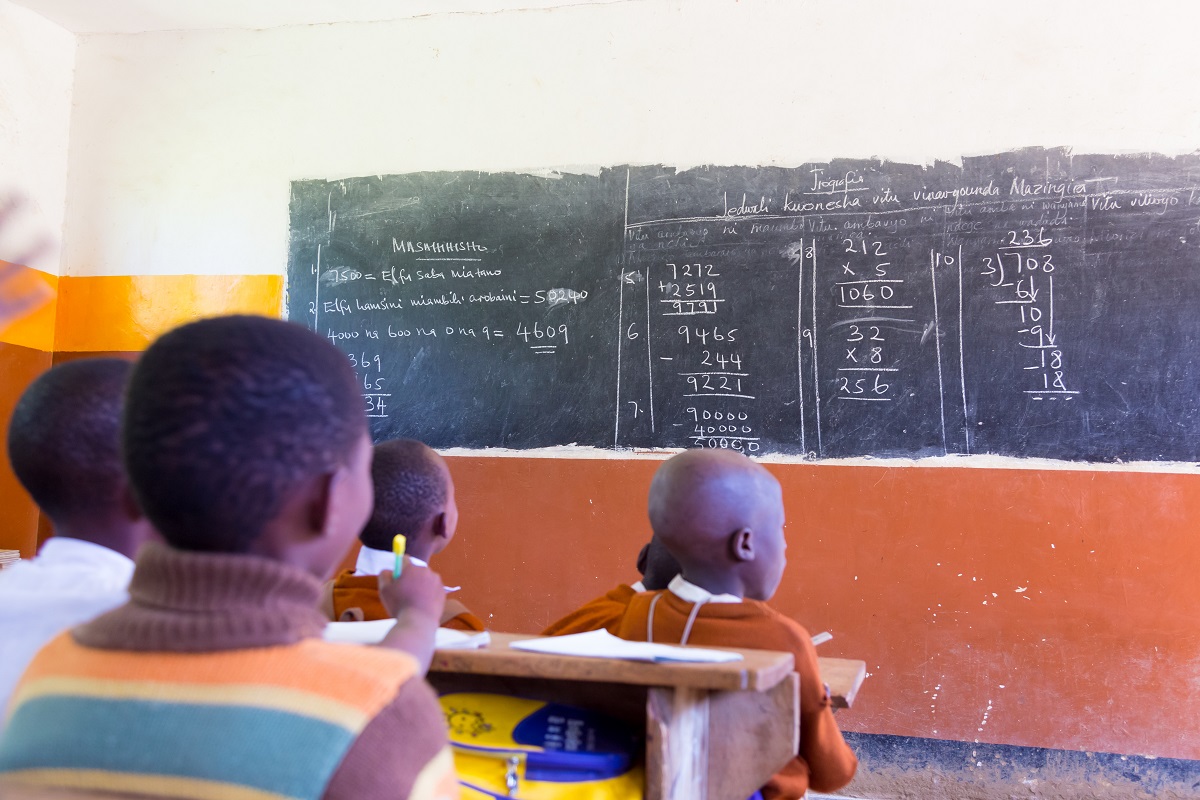Recommended
Girls’ success in school is critical to their personal futures and is an international development imperative. But what’s the best way to achieve that? In different times and in different places, people have tested many different types of interventions. Some have provided bicycles to girls in India and Zambia, to shorten their travel time and make it safer. Others have provided menstrual materials to make sure girls don’t have to miss school during their periods in Nepal and Kenya. Still others have highlighted the value of general purpose interventions for improving both girls’ access and learning.
But what about having a teacher who is also a woman? Every teacher—male or female—is different, but having a female teacher might benefit girl students if it changes behavior, either on the part of the teacher or the student. For example, what if female students work harder in a class with a female teacher because they see the teacher as a role model? Or what if male teachers are less likely to call on female students because they believe that girls are worse at math? In low-income countries in particular, fewer than half of teachers are women.
One of the challenges of testing whether female teachers translate into better learning (or access or safety) outcomes is that students normally aren’t randomly assigned to teachers. For example, if female teachers were assigned to schools where students tend to perform better for other reasons (say, because they’re wealthier), then a simple comparison of learning outcomes for students of female and male teachers might give the appearance that the female teachers are more effective, when it would really reflect other differences. In Malawi, female teachers are much less likely to be assigned to rural areas, where students face a host of disadvantages. In Chile, female teachers tend to have a higher proportion of female students, which could also invalidate simple comparisons.
Female teachers and girls’ learning
In a few cases—including Ecuador, China, and Korea—school systems have randomly assigned students to teachers. When students are randomly assigned, then the students assigned to female teachers are on average identical to the students assigned to male teachers, allowing us to see clearly the impact of teacher gender. In these cases of random assignment, what do we see?
- In Ecuador, children were randomly assigned to teachers for four years—kindergarten through third grade (at which point girls’ math scores are already lower than boys)—and researchers examined the impact of teacher gender on math scores. They found that “teacher gender does not affect the math achievement of boys or girls in our sample.”
- In China, children were also randomly assigned to teachers, but in middle schools. Researchers found that “being assigned a female math teacher generates large gains in beliefs, aspirations, investment, and test scores for girls who perceive themselves to have low ability in math.” There’s no impact for children who do not perceive their ability to be low.
- In Korea, also using random assignment in middle schools, researchers found that “female students perform substantially better on standardized tests when assigned to female teachers.” Those results persist five years later.
Many other studies seek to isolate the impact of female teachers on female students without an experiment. In the US, the UK, and the Netherlands, studies tend to find little or no effect (or they find an effect for just one subset of students in one time period), although at least one study in US middle schools did find a positive effect. A study in Chilean middle schools found a small positive effect, and a study in Indian primary schools also found a positive impact. Lastly, a study in primary schools across 10 West and Central African countries found a positive effect on math and reading achievement, but while that study doesn’t report results by country, our own analysis suggests lots of variation across countries, with negative impacts in some countries (Benin, Niger) and positive effects in others (Burundi, Democratic Republic of the Congo). Most studies do not find negative impacts on boys, showing that recruiting female teachers can be a way to reduce gender learning gaps when those persist.
If anything, positive impacts seem more consistent in middle school (yes in Korea, yes for a subset of students in China, yes in Chile) than for primary school (no in Ecuador, yes in India, mixed results in West Africa). None of the studies we found observes significant negative impacts. But there are still few studies in low- and middle-income countries, and while their results don’t tell a consistent story, they do suggest that female teachers are at least as good—and in some cases, better—in delivering learning outcomes for girls.
What about outcomes beyond learning?
Teachers are good for a lot more than increasing test scores! One could imagine that more female teachers could encourage girls to enter more technical fields or result in a lower likelihood of violence— physical or sexual—against girls in school. The evidence on these outcomes is slim and entirely from high-income environments. One study in the US finds that girls with female teachers in both primary and middle school see their teachers as more caring and as more helpful in clarifying content. Another finds that girls with female science teachers are more likely to view science as useful for the future. Three studies—two in the US, one in Korea—find that girls with female math or science teachers in middle or high school increases the chance that they enroll in science or math courses at university, major in those subjects, or aspire to a science or math degree. At another level, recruiting more female teachers has the potential to create more job opportunities for women, which could, in turn, increase investments in girls’ education. A study in India shows increases in investment in girls’ education when job opportunities improve.
One study in Uganda suggests that female teachers are as likely to carry out corporal punishment as male teachers. Our own analysis shows the same in several West African countries. We couldn’t find any studies on the impact of female teachers on sexual violence against students, but it’s certainly easy to imagine that this matters. Recent work in Trinidad and Tobago shows that parents make an effort to send their daughters to high schools with lower teen pregnancy rates: if student-teacher relationships are part of that problem (as they are reported to be in some settings), then more female teachers could go a long way. In low-income countries, only one in four secondary school teachers are women.
When we do observe an effect, why?
In places where beliefs that girls are less skilled in math and science are common, female teachers who have more confidence in girls can make a difference. One US study shows that female teachers boosted high school girls’ interest in science and math, but that those effects disappeared once researchers accounted for teacher behaviors and teacher attitudes. In China, raising girls’ aspirations was one of the reasons why female teachers improved girls’ learning. A study in Italy found that teacher’s gender stereotypes matter for high school girls’ math performance and school choice, but not the gender of the teacher. Potentially, an effective training that changes stereotypes for both male and female teachers could help (with “effective” being the operative word): in West and Central Africa, gender stereotypes persist among both female and male teachers. In places where female science teachers are less common, we would expect that the impact of a female teacher on girls’ aspirations would be higher. The specific mechanism and whether increasing the proportion of female teachers is an effective remedy will vary from place to place. (The positive impacts—where we see them—are not due to different observable characteristics of female teachers such as age, experience, or professional qualifications. Studies control for these characteristics.)
Takeaways
For both learning (where we have a little evidence) and other outcomes (where we have almost no evidence), more evidence from low- and middle-income countries will be beneficial. If female teachers increase girls’ likelihood of staying in school, heighten their aspirations, or lower girls’ likelihood of being subject to violence, then those are crucial outcomes. So, while the limited evidence to date certainly doesn’t establish increasing the proportion of female teachers as a guaranteed investment in terms of learning, remember that at the secondary school level, evidence on interventions that increase learning in low- and middle-income countries is still limited. The fact that several studies show positive impacts of female teachers suggest that this area merits further exploration, especially as we follow the impacts across all aspects of girls’ well-being.
Disclaimer
CGD blog posts reflect the views of the authors, drawing on prior research and experience in their areas of expertise. CGD is a nonpartisan, independent organization and does not take institutional positions.
Image credit for social media/web: AUSAid/Flickr






